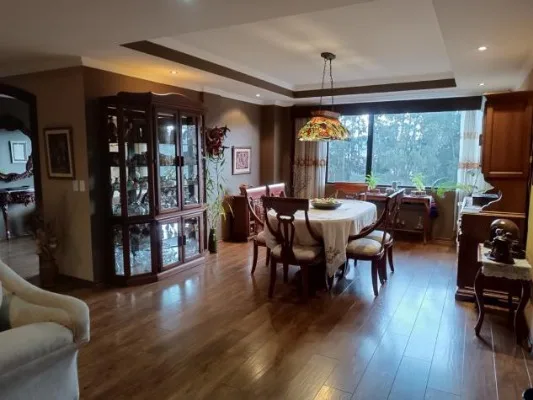While some see a real estate melt-down in Ecuador, others see opportunity
By Liam Higgins
Editor’s note: This is the second of a two-part series. Part one focused on the collapse of Ecuador’s real estate market.
Ryals Aberger has been investing in Latin American real estate for more than 25 years, focusing primarily on areas he believes foreigners will want to live.

Cuenca’s Parque Calderon.
“In the early 1990s, we were buying mostly in Mexico, Costa Rica, and Panama,” says Aberger, who works with U.S. and Canadian investors. “At the time, people were telling us we were crazy, that those countries were chronically dangerous and impoverished and that foreigners would never want to live there. The experts of the day told us to put our money in Europe, especially in Greece and Spain.”
Although Aberger did invest in a project on Spain’s Costa del Sol, he said his investments in Costa Rica and Panama proved to be much more profitable. “The conventional wisdom is almost always to put your money in places that are already popular and that are essentially at the top of their cycles,” he says. “I play by contrarian rules and am often more interested in the bottom of cycles.”
Where are Aberger and his partners looking to invest these days? “We’re moving our focus to South America and I especially like Ecuador and Peru right now.” He says he is also researching Argentina and Colombia, but calls them “back-burner prospects” at this point.

Tram construction of Calle Gran Colombia.
Aberger has already made his first Ecuadorian purchase, a historic house on Cuenca’s Calle Gran Colombia that he plans to renovate for residential and commercial space. He hopes to close on a second property, also on Gran Colombia, in July or August. “I’m looking specifically at the streets on the tram route,” he says.
Aberger is also looking at Quito but says his research there is on-going. “It’s a big city and more complicated than Cuenca. You have to pick your spots carefully,” he says.
Cuenca, according to Aberger, is a “no brainer.” It already has an established reputation, good infrastructure, good weather and culture, and a city government that wants to make it better, he says. “I’ve been visiting the city since 2002 and have always loved it,” he says. “Unlike other places in Latin America I’ve visited, it keeps getting better. It’s beginning to develop a level of sophistication that appeals to a broad range of people, not just North American retirees.”
Aberger believes the light rail system currently under construction and revitalization plans for Cuenca’s historic district, including turning a number of streets into pedestrian malls, will have a “transformational” impact on the city. “My interest is mostly in Centro, not just from a potential return-on-investment viewpoint, but from personal interest. I want to be involved in what’s happening here because I think it’s exciting.”

Aberger says Cuenca cultural events are a big draw.
Doesn’t Aberger worry about Ecuador’s current economic crisis and the fact that that the real estate market is in a virtual depression?
“I don’t really care about today or next year, or even a year or two from now. “My interest is five and ten years in the future. Our research takes a 10- and 20-year view, both backwards and forwards. We take into account overall economic stability, the health of the banks, government regulations and bureaucracy — never a pretty thing in this part of the world. We also look a country’s history of military and civil violence as well as crime rates.”
Aberger, who is working with Guayaquil real estate market analyst Gustavo Calderon in developing economic models, admits there are issues in the current recession that pose concerns. “The banks are obviously over-exposed on construction loans because of slow sales but the ratios are not close to those in the U.S. banking crisis in 2008 and 2009,” he says.
According to Calderon, tight bank lending rules established after Ecuador’s 1999 – 2000 financial melt-down, provide some level of protection. “Basically, Ecuadorian banks have been stingy in their loan policies and this should keep them solvent until there’s a turn-around. A recession of two or three years would be a problem,” he says.
As part of his research, Aberger has talked to a dozen Cuenca expats to get their take on the city and its future. “Most of them said they love the place and agree with my outlook,” he says. “These are folks who have lived here for at least five years. On the other hand, I also get a kick out of talking to the complainers, the nattering nabos of negativity, to borrow a phrase from a former U.S. vice president. For these guys, the world is going to hell in a hand-basket and they’re willing to tell you why. Most of them can’t see past the end of their nose, much less five years down the road. They can only see the mess on the tram route, not what the tram will mean once it’s finished. They can’t imagine the day when the airport is functioning again, only the inconvenience this morning.”
Aberger adds: “In 25 or 30 years of doing this, I’ve developed an almost sure-fire formula for success. Listen to the expat complainers, then do the opposite.”
Although his Cuenca plans are not yet fully developed, Aberger says his target market will not be older retirees. “We will focus on younger and middle-aged people who are financially established, particularly Europeans. There is an emerging trend of these groups arriving in Cuenca and I think it will accelerate. Renovated projects in Centro will attract them. We are not interested in modern condominiums.”






















